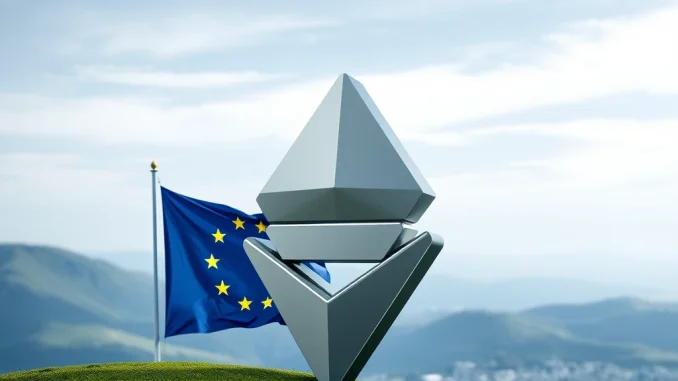
The world of cryptocurrency regulation is constantly evolving, and a significant point of discussion recently involves Tether and the European Union’s Markets in Crypto-Assets (MiCA) framework. The CEO of Tether, Paolo Ardoino, has publicly defended the company’s decision regarding its flagship stablecoin, USDT, and its approach to MiCA registration.
Why Tether is Bypassing MiCA, According to Paolo Ardoino
At the recent Token2049 event in Dubai, Paolo Ardoino articulated Tether’s position. He stated that the company does not plan to register USDT under the European Union’s comprehensive MiCA framework. This decision stems from specific concerns Tether holds regarding the regulation’s potential impact.
Ardoino highlighted worries about the strict reserve requirements mandated by MiCA. He suggested these stringent rules could inadvertently pose risks to Europe’s existing banking system. The CEO emphasized Tether’s primary goal: protecting its vast user base, which currently stands at around 400 million individuals globally.
As of early May 2024, USDT maintained a substantial presence in the market, with its market capitalization reported by Cointelegraph at approximately $149 billion. This scale underscores the significance of Tether’s decisions regarding regulatory compliance in major economic blocs like the EU.
Understanding MiCA and Stablecoin Regulation
The crypto regulation EU, specifically MiCA, aims to create a harmonized regulatory environment for crypto-assets across member states. For stablecoins like USDT, MiCA introduces specific requirements related to issuance, authorization, governance, and, crucially, reserve assets. The intention is to ensure stability and consumer protection within the EU market.
Key aspects of MiCA for stablecoins include:
- Issuers must be authorized entities.
- Reserve assets must be held in segregated accounts.
- Specific requirements on the composition and management of reserve assets to ensure liquidity and stability.
- Rules around redemption rights for holders.
What Are Tether’s Specific Concerns About MiCA?
While Ardoino didn’t detail every point, his public comments point to the reserve requirements as a major issue. The implication is that meeting MiCA’s specific criteria for reserve composition and custody might necessitate changes that Tether views as potentially disruptive or even harmful, particularly concerning interactions with the traditional banking sector in Europe.
Tether’s operational model involves holding a diverse portfolio of assets as reserves for USDT. The exact composition and the level of transparency have been subjects of past discussions. MiCA’s prescriptive nature regarding reserves appears to be the core point of contention for Tether’s leadership.
Impact of Tether’s MiCA Stance
Tether’s decision not to seek MiCA registration for USDT within the EU could have several implications:
- Accessibility in the EU: It might affect how easily EU residents can access or use USDT through regulated entities operating under MiCA.
- Market Share: Competitor stablecoins that do comply with MiCA might gain traction in the EU market.
- Regulatory Dialogue: Tether’s stance puts pressure on the ongoing dialogue between large crypto entities and global regulators.
This move by Tether highlights the ongoing tension between established crypto players and emerging comprehensive regulatory frameworks like MiCA. It underscores the complexities of applying traditional financial regulations to novel digital assets.
What’s Next for USDT in Europe?
Despite not registering under MiCA, USDT remains widely used globally. The specifics of how this decision will play out for EU-based users and businesses interacting with USDT via various platforms remain to be seen. The regulatory landscape is dynamic, and further developments or clarifications from both Tether and EU authorities are possible.
Summary
Paolo Ardoino, CEO of Tether, has clearly stated the company’s position on the EU’s MiCA regulation, opting not to register USDT due to concerns over reserve requirements and potential risks to European banks. This decision, while aimed at protecting Tether’s vast user base, places USDT outside the formal crypto regulation EU framework under MiCA, potentially impacting its accessibility and usage within the bloc and fueling further debate on stablecoin regulation globally.



